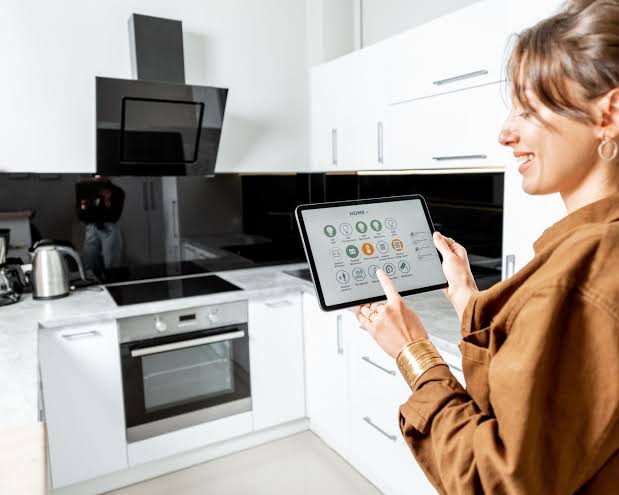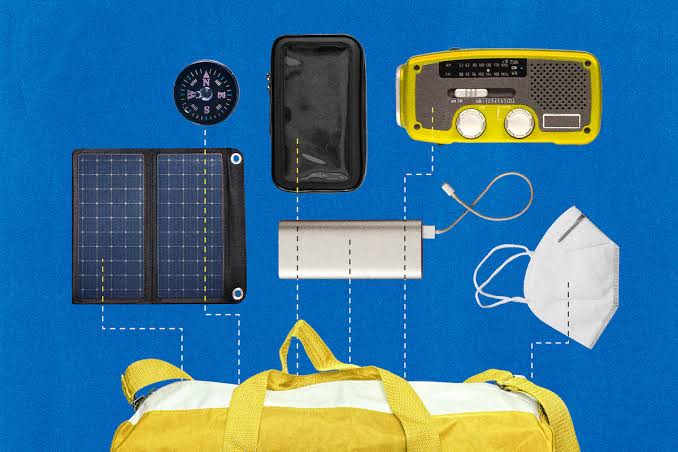In today’s fast-paced digital age, the kitchen has become more than just a place to cook meals. It is now a hub of innovation, convenience, and efficiency, thanks to the rise of smart gadgets. As of 2025, the integration of intelligent kitchen devices has transformed the culinary landscape, making cooking easier, faster, and more enjoyable. From voice-controlled appliances to AI-powered cooking assistants, smart gadgets are revolutionizing how people interact with food, manage their time, and maintain healthier lifestyles.
Simplifying Everyday Cooking Tasks
One of the most significant contributions of smart kitchen gadgets is the simplification of daily cooking tasks. Devices like smart ovens, pressure cookers, and air fryers come with built-in sensors, Wi-Fi connectivity, and mobile app controls that allow users to prepare meals with precision and ease.
For instance, smart ovens can automatically adjust cooking temperatures and times based on the type of food being prepared. They can also be preheated remotely via smartphone apps. This level of automation helps prevent overcooking or undercooking, ensuring consistent results every time.
Smart pressure cookers like the latest versions of Instant Pot now include voice assistants and AI features that guide users through step-by-step cooking processes. This reduces guesswork and enhances the overall cooking experience, especially for beginners or those with limited time.
Enhancing Precision and Consistency
Smart kitchen tools have redefined precision in cooking. High-tech meat thermometers, digital scales, and sous-vide machines now offer real-time feedback and app integration to achieve perfectly cooked meals every time.
Smart meat thermometers connect to mobile apps and notify users when the food has reached the desired temperature. This eliminates the need for constant checking and ensures that meat is neither raw nor overdone.
Sous-vide cookers allow for restaurant-quality results by immersing vacuum-sealed food in a precisely controlled water bath. These devices are often controlled via smartphone and provide recipe suggestions based on the type of protein or vegetable being used. The accuracy they offer is unmatched in traditional cooking methods.
Promoting Healthier Eating Habits
Smart kitchen gadgets also play a vital role in promoting health-conscious lifestyles. Many devices are designed to help users monitor their nutritional intake, control portion sizes, and prepare low-fat meals with ease.
Popular examples include:
- Smart blenders with built-in nutrient tracking and smoothie suggestions based on health goals.
- Smart air fryers that reduce oil usage while retaining flavor and texture.
- Connected food scales that provide detailed nutritional information for each ingredient measured.
- Recipe apps linked to smart gadgets that filter meals based on calorie limits or dietary restrictions.
With these tools, users can make informed decisions about their meals without compromising on taste or convenience.
Voice and App Control for Hands-Free Operation
The integration of smart kitchen gadgets with voice assistants like Amazon Alexa, Google Assistant, and Apple’s Siri has added a new dimension to multitasking in the kitchen. Users can set timers, convert measurements, search for recipes, or control appliance functions using simple voice commands.
For instance, someone cooking with messy hands can say, “Alexa, set the oven to 375 degrees,” or “Google, how much is one cup in grams?” without touching any devices. This hands-free control improves hygiene, safety, and overall ease of use.
Additionally, mobile apps offer remote control capabilities. Users can start their coffee maker from the bedroom or receive notifications when their meal is ready, creating a seamless cooking experience from anywhere in the home.
Inventory and Grocery Management
Another major innovation is the role of smart gadgets in managing kitchen inventory and shopping needs. Smart refrigerators can now monitor food freshness, notify users about expired items, and even suggest recipes based on available ingredients.
Key features include:
- Interior cameras that allow users to check fridge contents remotely while shopping.
- Barcode scanners and manual entry tools for logging groceries as they are added.
- Automatic grocery lists synced with apps like Instacart or Amazon Fresh.
This not only minimizes food waste but also streamlines meal planning and shopping efforts, saving both time and money.
Enhancing Culinary Creativity
Smart kitchen gadgets are not just about automation and health — they also spark creativity in the kitchen. With access to thousands of recipes, guided tutorials, and AI-generated cooking ideas, users can explore diverse cuisines and experiment with new dishes.
Many smart appliances come with companion apps that offer:
- Personalized recipe recommendations.
- Step-by-step video instructions.
- Suggestions based on available pantry items.
- Global recipes adapted to local tastes and dietary needs.
This encourages people to try new ingredients, cooking styles, and presentation techniques, transforming cooking from a chore into a pleasurable, creative experience.
Reducing Energy and Resource Waste
Energy efficiency is another important advantage of smart kitchen devices. Modern appliances are built to optimize energy use while reducing environmental impact. Smart dishwashers and washing machines, for example, adjust water and detergent usage based on load size and soil level.
Some energy-saving features include:
- Auto-off settings when cooking is complete.
- Energy monitoring apps that track usage patterns.
- Eco-modes that reduce power consumption during idle periods.
These features help households cut utility bills while contributing to sustainability efforts.
Encouraging Family Participation
Smart kitchen gadgets also encourage greater family involvement in cooking. With easy-to-use interfaces, interactive recipes, and gamified cooking apps, children and other family members can participate in meal preparation safely and enjoyably.
This shared experience fosters stronger family bonds, teaches important life skills, and builds appreciation for healthy food choices. Gadgets with child-friendly modes and visual cooking cues make it possible for people of all ages to contribute in meaningful ways.
Looking Ahead: The Future of Smart Kitchens
As technology continues to evolve, the future of the smart kitchen looks even more promising. Integration with AI and machine learning will further personalize cooking experiences, with devices learning user preferences and suggesting better meal plans over time.
Emerging trends include:
- Fully automated robotic cooking arms.
- Smart kitchen ecosystems where all devices communicate and coordinate.
- AI-generated custom meal plans based on health data from wearable devices.
By 2030, kitchens may become completely intelligent, self-regulating environments where users can focus entirely on enjoying their food and lifestyle without the stress of planning or execution.
Conclusion
The kitchen has become a focal point of smart home innovation, and in 2025, it is redefining convenience, precision, and creativity in culinary life. With smart gadgets making tasks easier, healthier, and more efficient, home cooking is more accessible and enjoyable than ever. Whether you’re a busy professional, a home chef, or someone just learning to cook, smart kitchen technology offers tools that elevate the entire food experience — from shopping and prep to cooking and cleanup.



